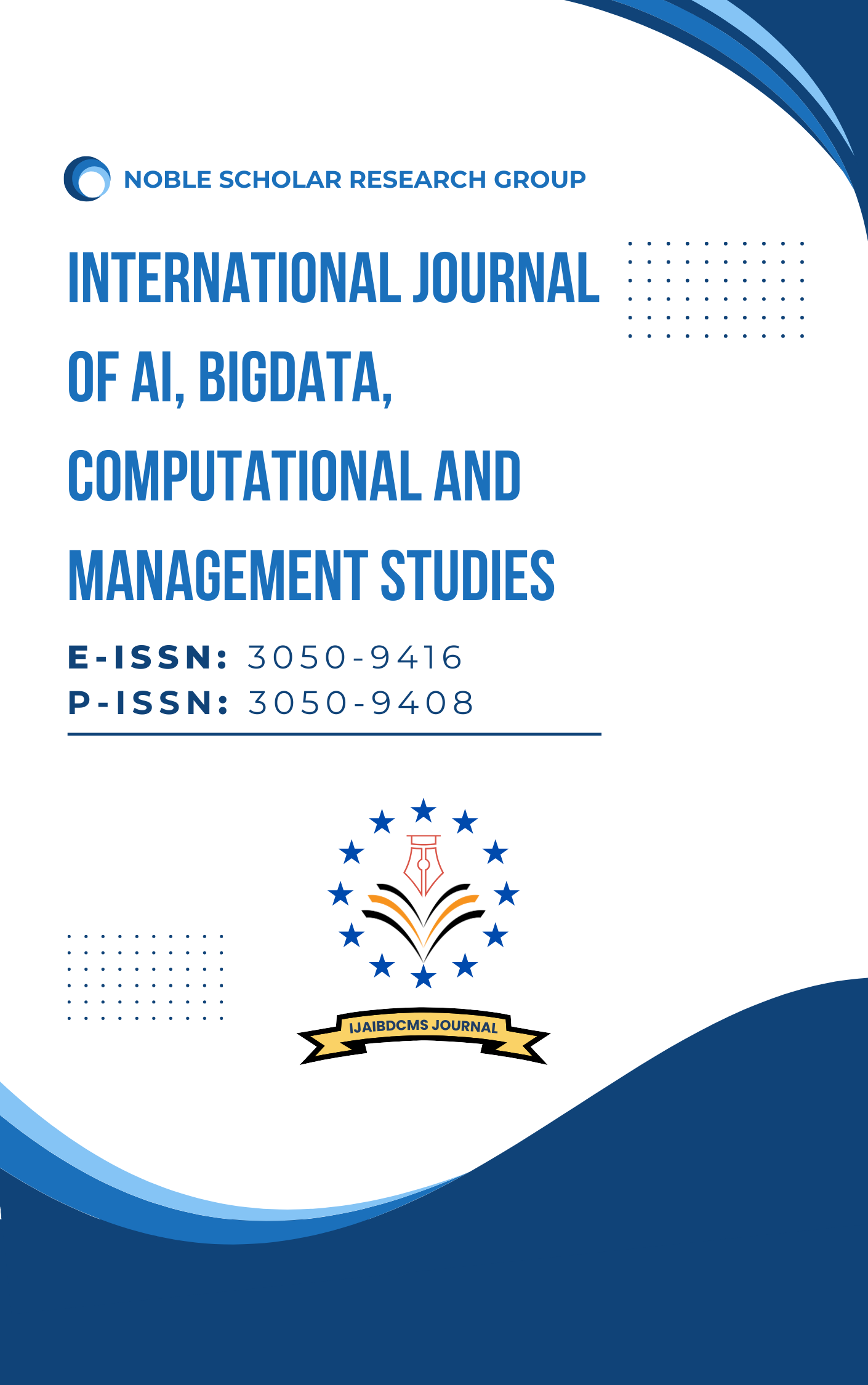The Evolution of ETL: From Informatica to Modern Cloud Tools
DOI:
https://doi.org/10.63282/3050-9416.IJAIBDCMS-V2I2P108Keywords:
ETL, Informatica, Cloud Data Integration, DataOps, ELT, AWS Glue, Azure Data Factory, Apache Airflow, Modern Data Stack, Data Lakehouse, Reverse ETL, Real-Time ETLAbstract
From robust legacy systems like Informatica that once dominated corporate data integration to modern, agile, cloud-native platforms stressing flexibility, scalability, and user-friendliness, the evolution of Extract, Transform, Load (ETL) technologies has been noteworthy. Initially, ETL approaches were batch-oriented, rigid, and reliant on their specialized developers, which generated a delayed response to changing many company needs. Organized processes helped Informatica, IBM DataStage, and Microsoft SSIS construct the basis; yet, as data volumes expanded and digital transformation sped forward, businesses required faster, more readily available, and more flexible solutions. Specifically designed for cloud systems and motivated for a straightforward interface with Snowflake, BigQuery, and Redshift, this requirement resulted in these modern ETL and ELT solutions such as Fivetran, Stitch, and Matillion. Innovations such as real-time data streaming, low-code/no-code interfaces, API-first architectures, and natural scaling help data teams and non-technical consumers both gain from these solutions. Furthermore, data pipeline agility and speed have increased with the switch from ETL to ELTwhere transformation occurs following load into a cloud data warehouse. Manual processes or infrastructure constraints no longer hold companies back; rather, automation, orchestration, and observability have grown to be vital components of companies. As companies quickly embrace data democratization and analytics-oriented projects, AI-driven transformations, enhanced metadata management, and cross-platform data fabric capabilities on the horizon will probably make ETL more intelligent and automated. This is a more general change: from considering data integration as a technical job to embracing it as a strategic instrument for real-time insights and innovation. The spread of ETL reveals not only a technology narrative but also how businesses are reconsidering the value of data in enabling increasingly intelligent, rapid, networked enterprises
References
1. Mukherjee, Rajendrani, and Pragma Kar. "A comparative review of data warehousing ETL tools with new trends and industry insight." 2017 IEEE 7th International Advance Computing Conference (IACC). IEEE, 2017.
2. Veluru, Sai Prasad. “AI-Driven Data Pipelines: Automating ETL Workflows With Kubernetes”. American Journal of Autonomous Systems and Robotics Engineering, vol. 1, Jan. 2021, pp. 449-73
3. Patel, Monika, and Dhiren B. Patel. "Progressive growth of ETL tools: A literature review of past to equip future." Rising Threats in Expert Applications and Solutions: Proceedings of FICR-TEAS 2020 (2020): 389-398.
4. Jani, Parth. "Modernizing Claims Adjudication Systems with NoSQL and Apache Hive in Medicaid Expansion Programs." JOURNAL OF RECENT TRENDS IN COMPUTER SCIENCE AND ENGINEERING (JRTCSE) 7.1 (2019): 105-121.
5. Thumburu, Sai Kumar Reddy. "A Comparative Analysis of ETL Tools for Large-Scale EDI Data Integration." Journal of Innovative Technologies 3.1 (2020).
6. Goldfedder, Jarrett. "Choosing an ETL tool." Building a Data Integration Team: Skills, Requirements, and Solutions for Designing Integrations. Berkeley, CA: Apress, 2020. 75-101.
7. Arugula, Balkishan, and Sudhkar Gade. “Cross-Border Banking Technology Integration: Overcoming Regulatory and Technical Challenges”. International Journal of Emerging Research in Engineering and Technology, vol. 1, no. 1, Mar. 2020, pp. 40-48
8. .Katragadda, Ranjith, Sreenivas Sremath Tirumala, and David Nandigam. "ETL tools for data warehousing: an empirical study of open source Talend Studio versus Microsoft SSIS." (2015).
9. Allam, Hitesh. Exploring the Algorithms for Automatic Image Retrieval Using Sketches. Diss. Missouri Western State University, 2017.
10. Pareek, Alok, et al. "Real-time ETL in Striim." Proceedings of the international workshop on real-time business intelligence and analytics. 2018.
11. Mohammad, Abdul Jabbar. “Sentiment-Driven Scheduling Optimizer”. International Journal of Emerging Research in Engineering and Technology, vol. 1, no. 2, June 2020, pp. 50-59
12. Stefanov, Geno. "Analysis of cloud based etl in the era of iot and big data." Proceedings of International Conference on Application of Information and Communication Technology and Statistics in Economy and Education (ICAICTSEE). International Conference on Application of Information and Communication Technology and Statistics and Economy and Education (ICAICTSEE), 2019.
13. Zdravevski, Eftim, et al. "Cluster-size optimization within a cloud-based ETL framework for Big Data." 2019 IEEE international conference on big data (Big Data). IEEE, 2019.
14. Gorhe, Swapnil. "ETL in Near-Real Time Environment: Challenges and Opportunities." no. April (2020).
15. Veluru, Sai Prasad. "Threat Modeling in Large-Scale Distributed Systems." International Journal of Emerging Research in Engineering and Technology 1.4 (2020): 28-37.
16. Indergand, Ronald. "Schema Evolution and Version Control in Modern Data Warehouses." (2016).
17. Jani, Parth, and Sarbaree Mishra. "Data Mesh in Federally Funded Healthcare Networks." The Distributed Learning and Broad Applications in Scientific Research 6 (2020): 1146-1176.
18. Cearnău, Dan-Cristian. "Cloud Computing-Emerging Technology for Computational Services." Informatica Economica 22.4 (2018).
19. Kupunarapu, Sujith Kumar. "AI-Enabled Remote Monitoring and Telemedicine: Redefining Patient Engagement and Care Delivery." International Journal of Science And Engineering 2.4 (2016): 41-48
20. Semenova, Natalia, Natalia Lebedeva, and Zhanna Polezhaeva. "Modern cloud services: Key trends, models and tools for interactive education." Proceedings of the Conference “Integrating Engineering Education and Humanities for Global Intercultural Perspectives”. Cham: Springer International Publishing, 2020.
21. Lorenzini, Marco. "Ruolo del cloud nell'amministrazione dei sistemi informatici moderni."
22. Talakola, Swetha. “Comprehensive Testing Procedures”. International Journal of AI, BigData, Computational and Management Studies, vol. 2, no. 1, Mar. 2021, pp. 36-46
23. Ghilic-Micu, Bogdan, Marian Stoica, and Cristian Răzvan Uscatu. "Cloud Computing and Agile Organization Development." Informatica Economica 18.4 (2014).
24. Arugula, Balkishan. “Change Management in IT: Navigating Organizational Transformation across Continents”. International Journal of AI, BigData, Computational and Management Studies, vol. 2, no. 1, Mar. 2021, pp. 47-56
25. Sangaraju, Varun Varma. "AI-Augmented Test Automation: Leveraging Selenium, Cucumber, and Cypress for Scalable Testing." International Journal of Science And Engineering 7 (2021): 59-68.
26. Butoi, Alexandru, Nicolae Tomai, and Loredana Mocean. "Cloud-based mobile learning." Informatica Economica 17.2 (2013).
27. S. S. Nair, G. Lakshmikanthan, J.ParthaSarathy, D. P. S, K. Shanmugakani and B.Jegajothi, ""Enhancing Cloud Security with Machine Learning: Tackling Data Breaches and Insider Threats,"" 2025 International Conference on Electronics and Renewable Systems (ICEARS), Tuticorin, India, 2025, pp. 912-917, doi: 10.1109/ICEARS64219.2025.10940401.



